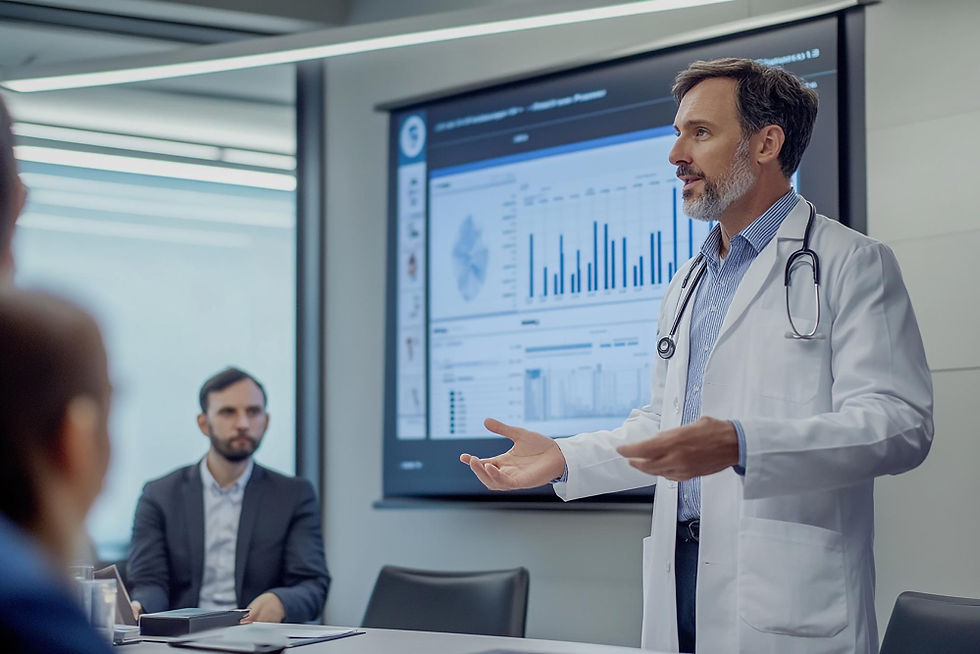The Evolution and Impact of Medical Technology
- test developer
- Sep 2, 2024
- 3 min read

Medical technology has transformed healthcare, shaping how we diagnose, treat, and manage diseases. From simple diagnostic tools to sophisticated imaging systems and wearable devices, medical technology continues to push the boundaries of what’s possible in medicine.
1. The Role of Medical Technology in Modern Healthcare
Medical technology refers to the tools, machines, and procedures used to diagnose and treat illnesses and medical conditions. It encompasses a wide range of innovations, from stethoscopes and X-rays to advanced surgical robots and artificial intelligence (AI). These technologies improve the accuracy of diagnoses, enhance patient care, and enable more effective treatments.
2. Key Innovations in Medical Technology
Imaging Technologies: One of the most significant advancements is in medical imaging. Technologies like MRI (Magnetic Resonance Imaging), CT (Computed Tomography) scans, and ultrasound have revolutionized how doctors see inside the human body. These tools allow for non-invasive diagnoses, reducing the need for exploratory surgeries and enabling earlier detection of diseases.
Wearable Devices: Wearable medical devices, such as smartwatches and fitness trackers, monitor vital signs like heart rate, blood pressure, and oxygen levels. These devices empower patients to manage their health proactively and provide doctors with real-time data for better treatment plans.
Telemedicine: Telemedicine uses technology to provide remote healthcare services. Patients can consult doctors via video calls, reducing the need for physical visits and increasing access to care, especially in rural or underserved areas. This has become especially important during the COVID-19 pandemic, where minimizing in-person contact was crucial.
Robotic Surgery: Surgical robots, like the da Vinci system, have made minimally invasive surgeries more precise. These robots allow surgeons to perform complex procedures with enhanced dexterity and control, reducing recovery times and improving outcomes for patients.
AI and Machine Learning: AI is being integrated into various aspects of healthcare, from predictive analytics that forecast patient outcomes to AI-driven diagnostic tools that assist doctors in identifying diseases. Machine learning algorithms analyze vast amounts of data to identify patterns, aiding in the development of personalized medicine.
3. The Impact of Medical Technology on Patient Care
The integration of these technologies has vastly improved patient outcomes. Early diagnosis through advanced imaging, continuous monitoring via wearables, and the precision of robotic surgery all contribute to better, faster, and more accurate treatments. Moreover, telemedicine has democratized access to healthcare, breaking down geographical barriers and providing care to those who might otherwise go without.
4. Challenges and Future Directions
While medical technology offers numerous benefits, it also presents challenges. The high cost of some technologies can limit access, and there are concerns about data privacy, particularly with wearable devices and AI systems that handle sensitive health information. Moreover, the rapid pace of technological advancement requires continuous training for healthcare professionals to keep up with new tools and systems.
Looking forward, the future of medical technology is promising. Innovations like 3D printing for customized prosthetics, CRISPR for gene editing, and further integration of AI in diagnostics are just the beginning. As technology continues to evolve, so will its ability to enhance human health and well-being.
5. Conclusion
Medical technology is at the heart of modern healthcare, driving improvements in how we diagnose, treat, and prevent disease. While challenges remain, the potential benefits far outweigh the drawbacks. As we move into the future, ongoing advancements in medical technology will continue to revolutionize healthcare, leading to better patient outcomes and a higher quality of life for people around the world.







Comments